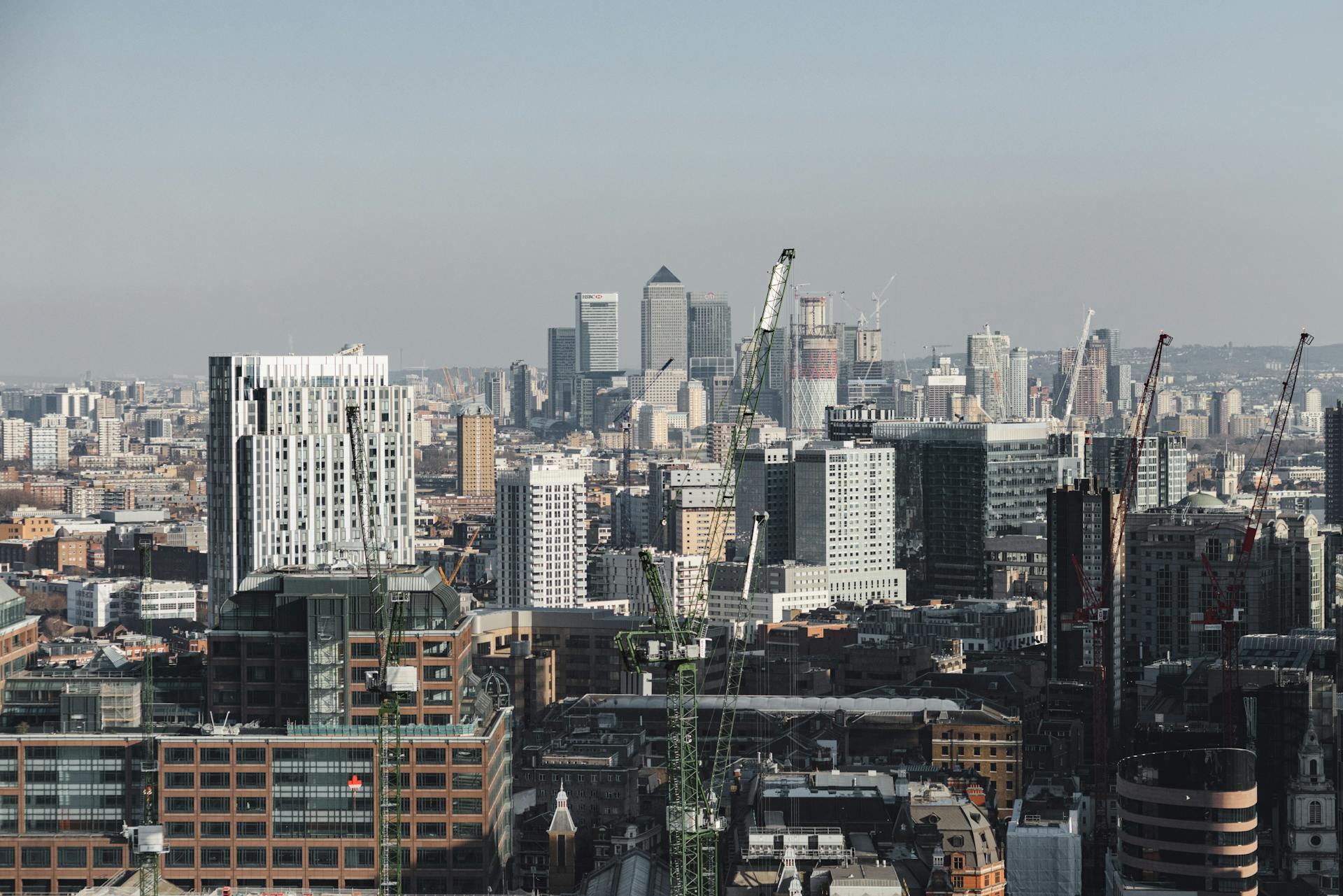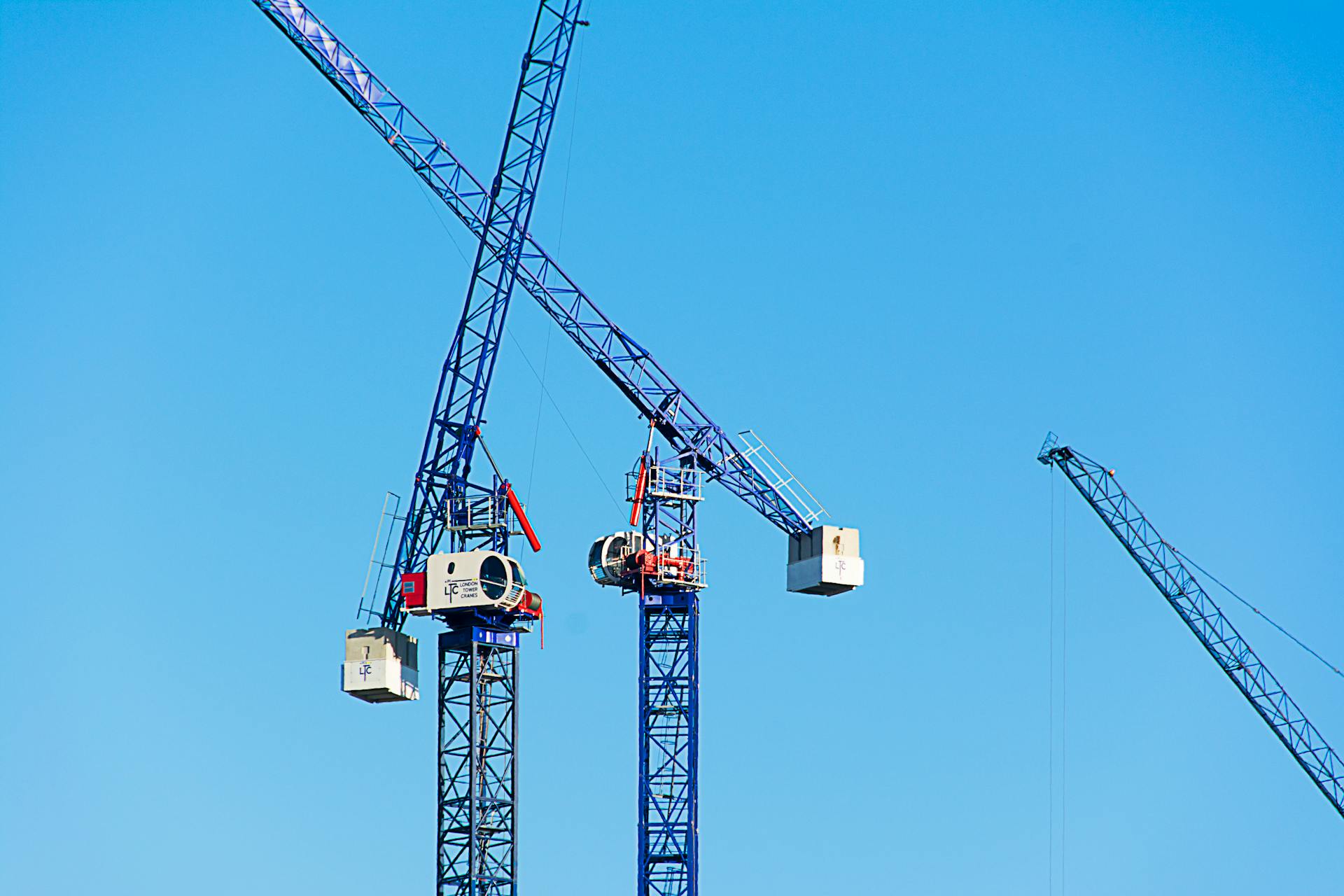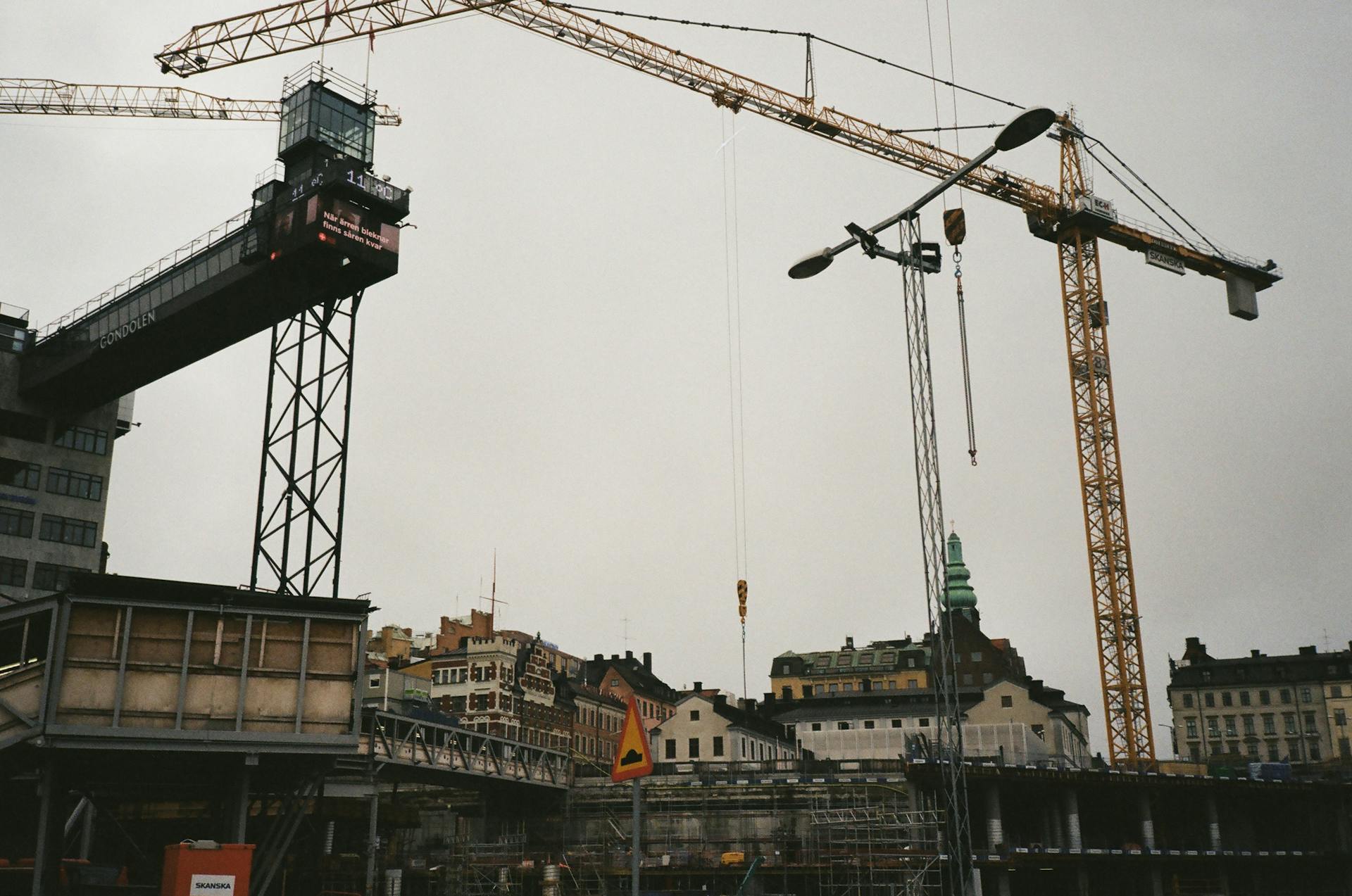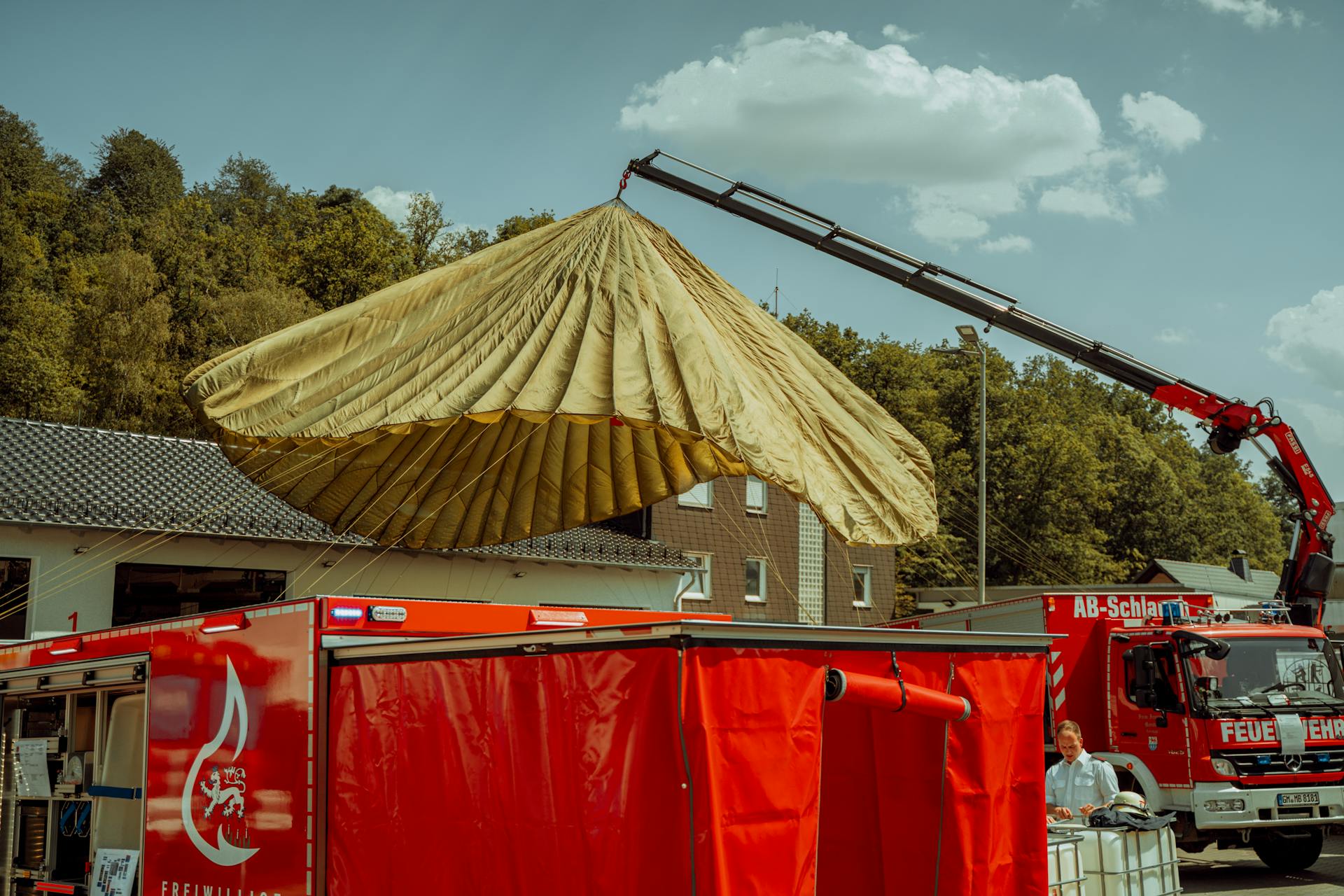
Pillar jib cranes are a versatile and reliable option for material handling, available in a comprehensive range of sizes and configurations.
They can be mounted on the floor, on a wall, or on a ceiling, making them suitable for a variety of applications.
A pillar jib crane's compact design allows for easy installation in tight spaces, and its robust construction ensures durability and long lifespan.
With capacities ranging from a few hundred to several thousand kilograms, pillar jib cranes can handle a wide range of loads.
Improving Productivity and Ergonomics
Demag Cranes and Components is a leading manufacturer of high-performance and dependable industrial cranes, components, and drives.
Their KBK pillar- and wall-mounted slewing jibs are extremely versatile and reliable.
These jibs have been serving the industry for over 50 years, with Demag being a key player in the KBK modular crane industry.
Products from Demag like jib cranes can meet your application requirements precisely, quickly, and efficiently.
The experience and expertise of Demag in the industry ensure that their products, including jib cranes, are designed to improve productivity and ergonomics.
By choosing a jib crane from Demag, you can expect to see significant improvements in your material flow and logistics needs.
Workspace Considerations
Manual material handling can be a real challenge in the workspace, taking up valuable time and putting employees at risk. It's often an ergonomic burden, too.
Light and fast load handling is a major advantage of pillar jib cranes. They enable loads to be lifted and transported quickly and easily.
In fact, Demag slewing jib cranes can lift loads of up to 5T. This makes them a reliable choice for a variety of tasks.
Their ease of operation and high operating safety and reliability also make them a great option for many workspaces. Simple installation using fittings included in the system is another perk.
Here are some key features to consider:
- Light and fast load handling
- Ease of operation and high operating safety and reliability
- Load capacities up to 5T
- Simple installation using fittings included in the system
Utilizing in the Workspace
Incorporating jib cranes into your workspace can greatly improve safety and efficiency. Manual material handling can be a real burden for employees, but with a jib crane, loads can be lifted and transported quickly and easily.
Demag slewing jib cranes offer a wide range of features that make them ideal for workspaces. They provide light and fast load handling, ease of operation, and high operating safety and reliability.
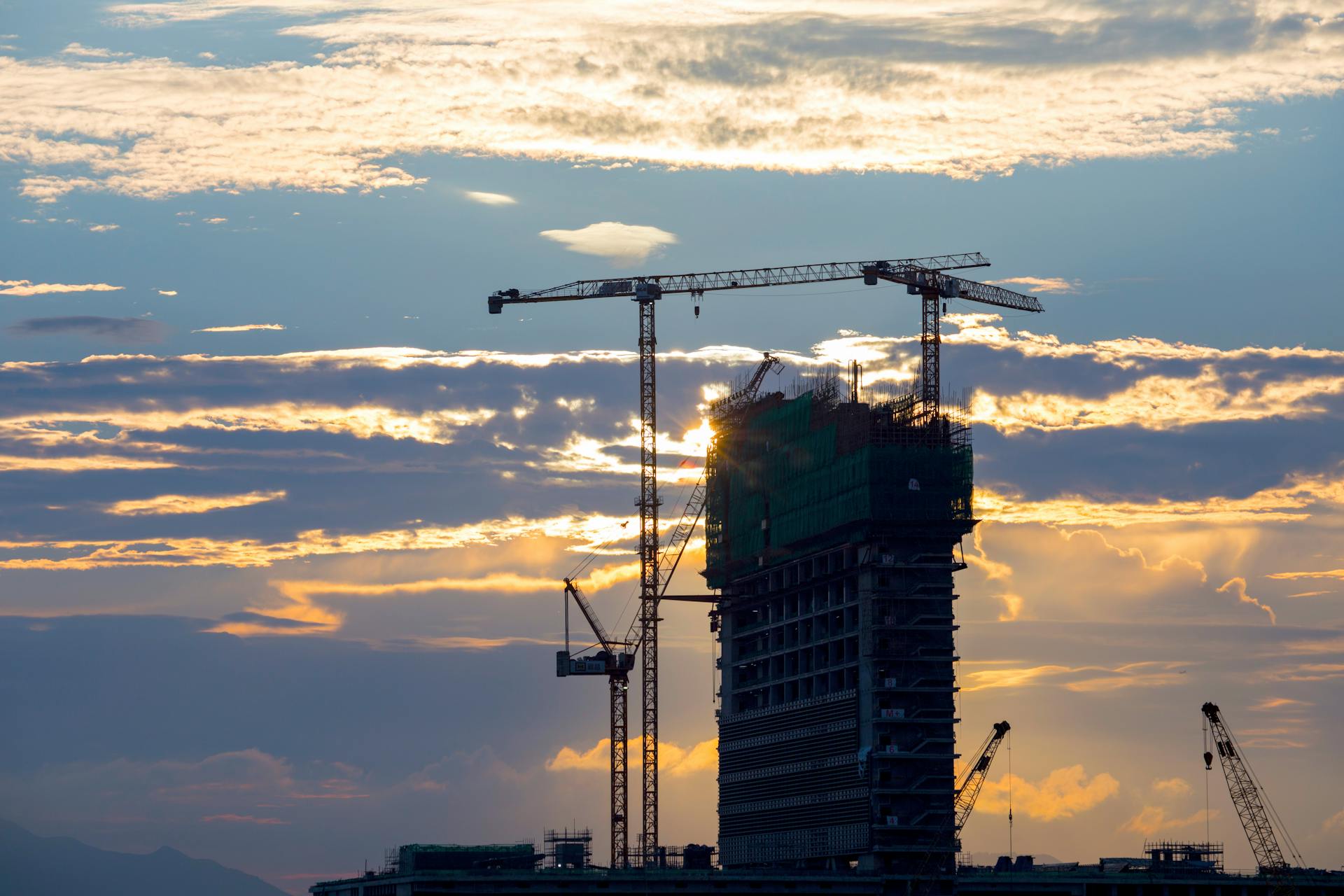
One of the key benefits of KBK pillar- and wall-mounted slewing jibs is their load capacity. They can handle loads up to 5T, which is impressive for their compact size.
If you're looking for a jib crane with a long hook path and low headroom dimension, consider one equipped with a low-headroom I-beam jib. These cranes are perfect for situations where space is limited.
Here are some key specifications to consider when choosing a pillar and wall-mounted slewing jib crane with a low-headroom design:
These cranes are suitable for universal applications over the entire load capacity range up to 2000 kg.
Get Your
A good workspace can make all the difference in your productivity and overall job satisfaction.
Consider the importance of natural light in your workspace, as it can boost your mood and energy levels.
A clutter-free workspace can help you stay focused and avoid distractions.
Incorporate plants into your workspace to purify the air and create a calming atmosphere.
A well-designed workspace can also improve your physical health by encouraging movement and reducing eye strain.
Features
Pillar jib cranes are designed to provide high efficiency and versatility in material handling. They are widely used in various industrial applications due to their unique features and advantages.
One of the key features of pillar jib cranes is their ability to operate on a wide range of power supplies, including three-phase AC with a rated frequency of 50/60HZ and a rated voltage of 380V.
Pillar jib cranes can be installed at an altitude of less than 2000m, making them suitable for a variety of industrial settings.
The jib construction of pillar jib cranes can be either under-braced or over-braced, depending on the specific requirements of the application.
A wide base plate at the bottom of the jib ensures that loads are distributed evenly on the foundation, providing stability and safety.
Pillar jib cranes are available with a range of lifting units, including manual chain hoists, geared trolleys, electrical chain hoists, and motorized trolleys.
Some of the key features of pillar jib cranes include:
- High efficiency and good price
- Maximum versatility and wide application
- Compact design and light weight
- Smooth and fast loading
- Ease of operation
- Safety and reliability
These features make pillar jib cranes an ideal choice for a variety of industrial applications, including manufacturing, warehousing, and logistics.
Performance and Maintenance
The pillar jib crane is designed with safety and efficiency in mind, thanks to the adoption of the best available technology.
Perfect braking systems play a crucial role in improving safety and reliability, and the dustproof design ensures a long working life of up to 1 million times.
The hardened and polished tooth surface is a key feature that enables smooth operation without any troubles.
Here's a quick rundown of the key features that contribute to the performance and maintenance of the pillar jib crane:
- Best technology for safe and efficient operation
- Perfect braking systems for improved safety and reliability
- Dustproof design for a long working life of up to 1 million times
- Hardened and polished tooth surface for smooth operation
Fast and Excellent Performance
Fast and Excellent Performance is crucial for any equipment, especially cranes. The stepless frequency conversion control system installed in the crane and trolley enables stable braking and accurate location.
This system also ensures reliable performance and steady travel. The crane and trolley can position quickly, eliminating the problem of load swing.
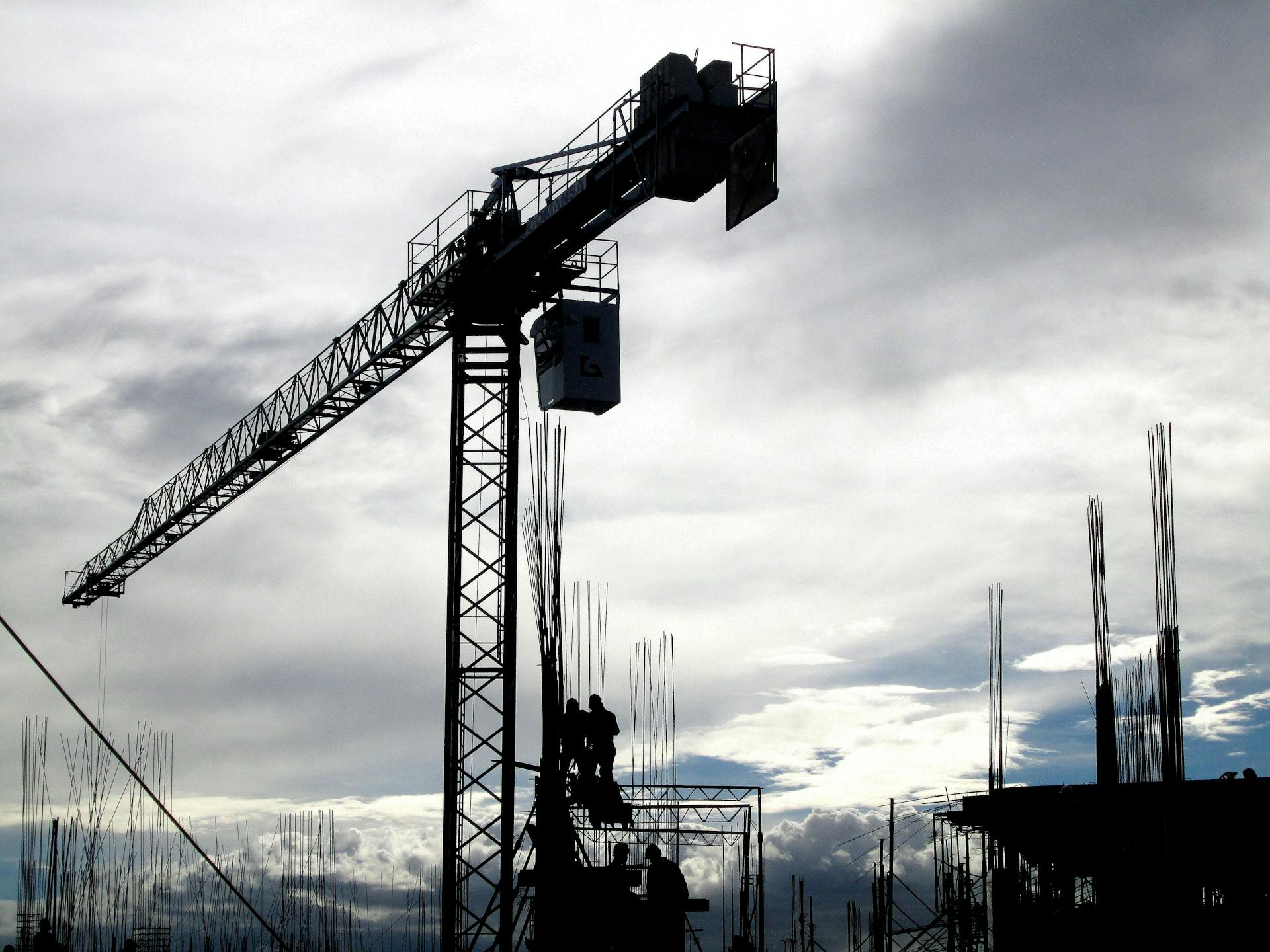
The smooth and fast loading capabilities of the crane are a significant advantage. It allows for efficient and safe operation, reducing the risk of accidents and damage.
A stable and accurate system is also essential for maintenance. Regular checks and adjustments can be made with ease, ensuring the crane remains in top condition.
Free Maintenance
The free maintenance design of our equipment is a game-changer. By adopting the best technology, we've made frequent operations safe and efficient.
Perfect braking systems are a key part of this design, and they can significantly improve safety and reliability. This is especially true for pillar jib cranes, where a reliable braking system is crucial.
The dustproof design of our equipment is another major advantage. It allows the working life of the crane to reach up to 1 million times, which is impressive.
The hardened and polished tooth surface of our equipment ensures smooth operation without troubles. This is a result of careful design and attention to detail.
Here's a summary of the benefits of our free maintenance design:
- Safe and efficient frequent operations
- Improved safety and reliability with perfect braking systems
- Dustproof design for extended working life (up to 1 million times)
- Smooth operation without troubles due to hardened and polished tooth surface
Motion Limiter
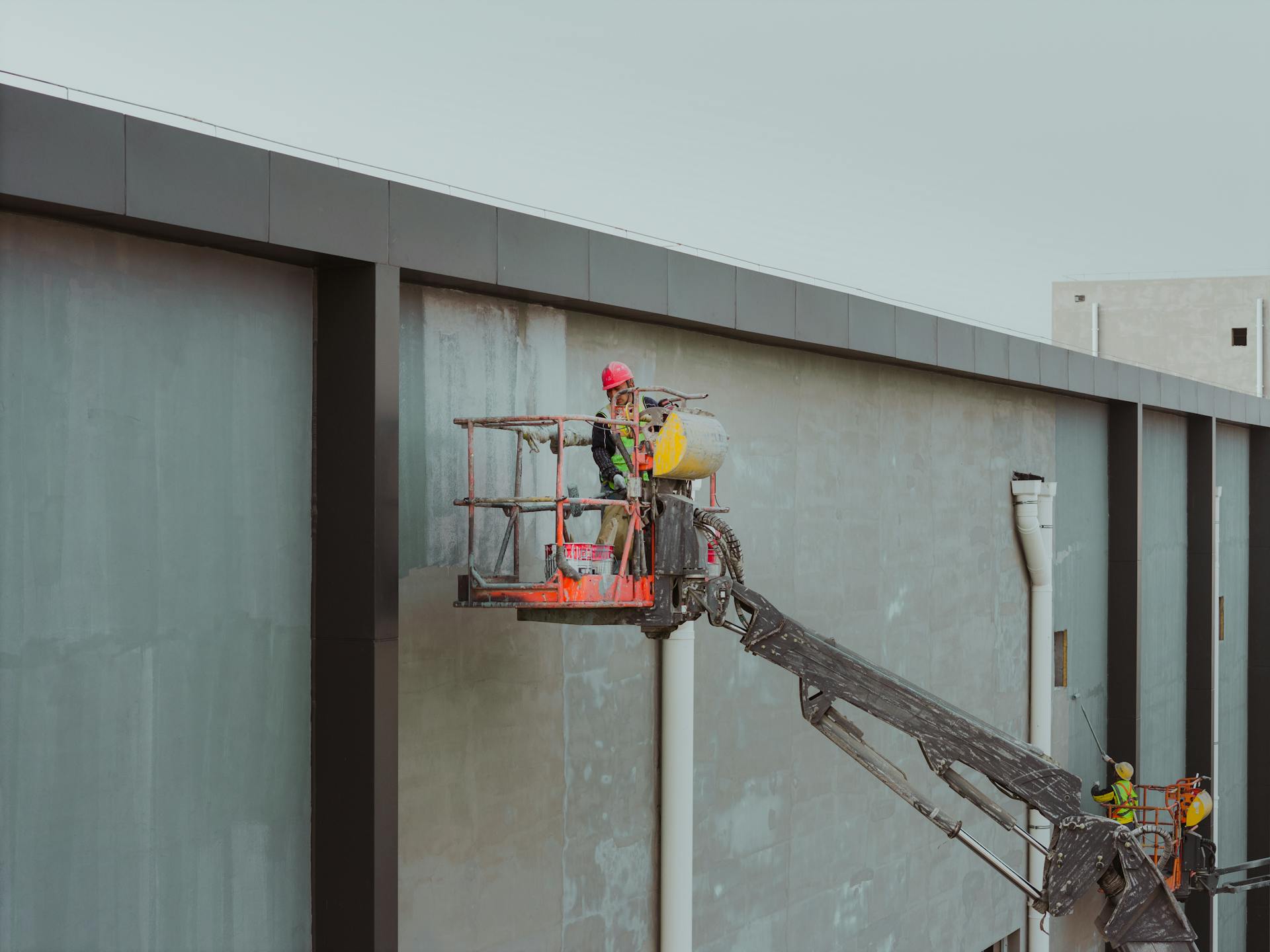
You can install an adjustable slewing motion limiter to limit the slewing range of the jib, as needed.
This feature allows you to tailor the motion limiter to your specific requirements, giving you more control over the crane's performance.
An adjustable slewing motion limiter can be installed at a later date, thanks to its clamp-fitted design.
This flexibility makes it easier to upgrade or modify your crane as needed, without having to replace the entire system.
Components and Structure
The pillar jib crane is made up of several key components, including the up-pillar, down pillar, main beam bar, electric hoist, rotating mechanism, and electric system.
The vertical pillar, also known as the mast, is typically made from high-strength steel and is securely anchored to the ground or floor, providing a stable base for the crane.
This design allows the crane to support the rotating boom and the lifting mechanism without tipping over, even when handling heavy loads.
Comprehensive Product Range
Our comprehensive product range is designed to meet the diverse needs of various industries. We offer a broad spectrum of load capacities and outreach dimensions to ensure that you find the perfect fit for your specific requirements.
We prioritize safety and reliability, providing a safe and reliable material flow that minimizes the risk of accidents. Our cranes are designed to ensure optimum workplace design, making it easier for your workers to operate them efficiently.
Simple operation is a key feature of our cranes, making them easy to use even for those without extensive experience. Ergonomic handling is also a priority, reducing the risk of injury and improving overall productivity.
Here's a summary of our comprehensive product range:
Our cranes are designed to meet the highest possible quality standards, ensuring that you receive a reliable and efficient product that meets your needs.
Main Components
A pillar jib crane is made up of several key components that work together to provide a reliable and efficient lifting solution. The main components include the up-pillar, down pillar, main beam bar, electric hoist, rotating mechanism, and electric system.
The up-pillar and down pillar are typically made from high-strength steel and provide a stable base for the crane. The main beam bar is a crucial component that supports the rotating boom and lifting mechanism.
The electric hoist is responsible for lifting and moving loads, while the rotating mechanism allows for smooth and precise rotation. The electric system powers the entire crane, making it easy to operate and control.
The pillar design of a jib crane is central to its functionality and stability. It's like the backbone of the crane, providing support and balance to the entire system.
A well-designed pillar foundation is essential for a free-standing pillar jib crane. The foundation comes in three main types: Bolt-type base-plate mount foundation, Insert mount foundation, and Insert sleeve mounted pillar jib crane foundation.
Here are the three main types of pillar jib crane foundation designs:
- Bolt-type base-plate mount foundation: The pillar of the jib crane has a base-plate, bolted to the concrete floor securely.
- Insert mount foundation: The jib column is mounted within the concrete floor for a permanent crane solution.
- Insert sleeve mounted pillar jib crane foundation: A separate steel sleeve is installed permanently in the concrete floor, allowing the jib to be slid into or removed out of the sleeve quickly and easily.
Cantilever
The cantilever is a crucial component of a pillar jib crane, and its design can vary depending on the specific needs of the application. It can be designed into various types such as an I beam type, box girder with I beam type, tid rod type, or other customized types.
A box girder with I beam cantilever design is a popular choice for many applications. This design offers a strong and rigid structure that can withstand heavy loads and harsh environments.
The type of cantilever design used can impact the overall performance and efficiency of the crane. For example, a tid rod type cantilever may be more suitable for applications where precision and accuracy are crucial.
Here are some common types of cantilever designs used in pillar jib cranes:
The cantilever design should be carefully selected based on the specific requirements of the application. It's essential to consider factors such as load capacity, workspace size, and operational needs when choosing the right cantilever design.
You might enjoy: Jib Crane Design
Connections
Connections are a crucial part of any crane's structure, and Demag slewing jib cranes are no exception.
Anchors are used to fix pillars to the foundations, with a template used for precise alignment with the mounting holes in the base of the pillar.
A template is used for precise alignment of the anchors with the mounting holes in the base of the pillar when the foundations are laid.
Anchor bolts are used to attach a pillar to an existing concrete floor, which is highly suitable for relatively thin concrete floors that have a thickness of at least 200 mm.
Chemical anchor bolts are first used to install an anchor plate to which the base of the crane pillar is then attached.
Pillar brackets can be used for simple attachment of wall-mounted slewing jib cranes to a wide range of pillar dimensions, and can be attached at the required height to all square-section pillars.
This makes installation of wall and pillar connections for Demag slewing jib cranes a breeze, offering maximum safety and ease of installation.
You might enjoy: Jib Crane Installation
Frequently Asked Questions
What is a jib in cranes?
A jib is a horizontal operating arm that extends from a crane, supporting a movable hoist. It's typically fixed to a wall or pillar on the floor, providing a stable lifting mechanism.
What is the difference between jib and hoist?
A hoist is a general lifting device, while a jib provides precise load positioning along a horizontal axis, offering a customized solution for specific applications.
Sources
- https://www.demagcranes.com/en-us/products/cranes/kbk-modular-crane-system/kbk-pillar-and-wall-mounted-slewing-jibs
- https://www.demagcranes.com/en/products/cranes/kbk-light-crane-system/kbk-pillar-and-wall-mounted-slewing-jibs
- https://www.globus-hebetechnik.de/Pillar-jib-cranes
- https://www.cranesdq.com/pillar-jib-crane-for-sale-good-price.html
- https://www.eotcranekit.com/jib-crane/pillar-jib-crane.html
Featured Images: pexels.com
